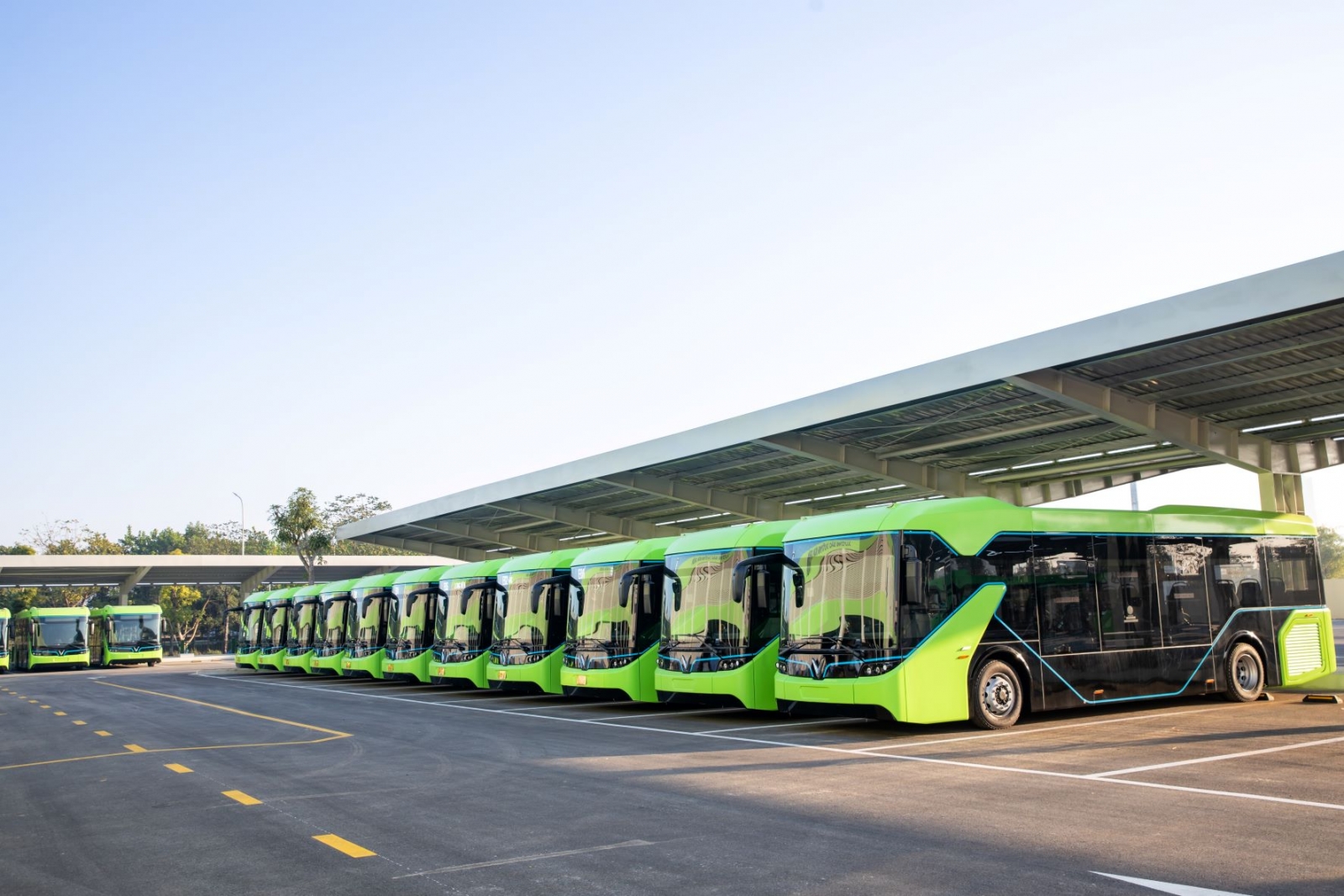
(Photo: VinBus)
Residents in Ho Chi Ming City were disappointed to hear that the D4 electric bus route from Vinhomes Grand Park to Sai Gon Bus Station might come to a stop. The bus service attracts a huge number of passengers as it is convenient and clean, which is different from other bus services.
In the first nine months 2023, nearly 29,000 trips were provided, serving 820,000 passengers. But the bus route is likely to stop because of heavy losses.
According to VinBus, the investor, the subsidy rate 44.1% is too low, which is just 2/3 of that for buses using diesel and compressed natural gas (CNG). Despite a steady rise in the number of passengers, the revenue remains insufficient to cover expenses.
Consequently, the company has incurred a loss of VND28.6 billion after 1.5 years of operation. It has asked municipal authorities to increase the subsidy rate from 44.1% to 64.8%, equal to an average subsidy rate of the bus system in HCM City in 2023.
VinBus had planned to open four new electric bus routes but failed to implement on schedule. According to the HCM City Transport Department, it takes time to follow administrative procedures and to get approval from state management agencies.
Electric buses are not only used in affluent countries, but also in many regional countries with tax and fee subsidies to gradually replace vehicles using internal combustion engine, and reduce carbon in public transport, particularly in large cities.
For example, Bangkok is shifting to use 100% of electric buses within three years. It plans to replace existing buses with 3,200 electric buses by 2025. The government is encouraging the development of electric buses by supporting investors to build infrastructure and expand the charging network and setting the goal of manufacturing 1.2 million electric buses.
In the meantime, Jakarta plans to put 1,000 electric buses into use by the end of this year and increase the figure to 3,000 by the end of 2025. In Singapore, buyers of electric cars can receive financial support of up to 45,000 Singaporean dollars.

Electric bus in Jakarta. (Photo: ITDP Indonesia)
The measures taken by the countries aim at speeding up green economy and circular economy development, adapting to climate change that many countries committed at COP26.
Vietnam has also set a roadmap for transitioning to electric vehicles, green energy, and reducing carbon and methane emissions, with the goal of achieving zero greenhouse gas emissions by 2050.
Under the roadmap, electric buses would account for 45-50% of total public transport by 2025 in Hanoi, 25% in HCM City, 25-35% in Da Nang, 20% in Can Tho and 10-15% in Hai Phong.
The electric-bus proportion must reach 5% at least in first-class cites. From 2030, the proportion of electric vehicles and green vehicles must be 50% at least, while 100% of taxis utilizing green fuel.
The goals show the long-term vision towards sustainable development. However, it is not easy to meet these goals. Until now, there has been no clear policy on encouraging the development and manufacturing of EVs. People are not encouraged enough to use electric vehicles, except registration for tax remissions.
Meanwhile, the proposals on giving subsidy to EV manufacturers and users and prioritizing the development of charging and parking networks have not been discussed and even have been ignored.
Electric vehicles are not popular in Vietnam. It is necessary to encourage investors to maintain and expand bus networks. They can only maintain operation if they don’t suffer a long-term loss. Subsidies and other forms of support won’t satisfy everyone, but these will serve most people and help mitigate pollution.





